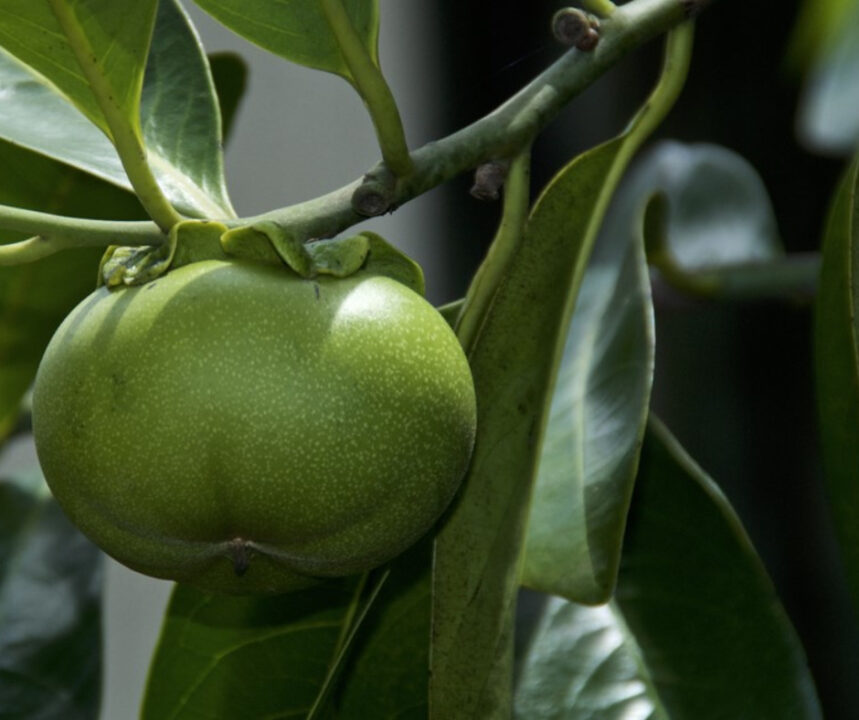Manchineel Tree (Hippomane Mancinella)
The manchineel tree (Hippomane mancinella) grows in tropical southern Florida and the Caribbean. Its fruit, leaves and bark are lethal to humans — contact with them causes dermatitis, blistering, and conjunctivitis with blindness; ingestion causes severe gastrointestinal problems.
But one creature appears immune to its toxins: Iguanas in Central and South America eat the fruit, and their saliva neutralizes the sap.
Leaves
The leaves of the manchineel tree (Hippomane mancinella) are oval and have tiny teeth along their edges. They grow on the stem of the plant in an alternating pattern and are about five to 10 centimeters long. The plant belongs to the Euphorbia genus, which also includes such decorative holiday plants as poinsettias.
The milky sap of the manchineel contains a host of skin irritants, including phorbol, that cause strong allergic contact dermatitis. Even standing under the tree during a rainstorm can be dangerous because the washed-down sap can still blister the skin. The trees are found along beaches and in brackish swamps where they help reduce erosion.
Manchineels normally need very little supplemental water when they are growing outdoors, but the frequency of your watering may change depending on the season. In summer, when the sun is at its strongest and the soil dries out faster, you’ll need to water your plant more frequently. During winter, you’ll need to water less often.
Fruit
The small, apple-like fruit of a manchineel tree may look tempting to a beachgoer — and it tastes sweet enough. However, the tree’s fruit packs a punch that kills many who eat it. It contains phorbol, which causes internal bleeding and edema, and shock. The toxins can also cause blindness when smoke from burning manchineel wood comes into contact with the eyes, as reported by ScienceAlert.
Even touching the bark can cause dermatitis, which leads to severe burn-like blistering when the milky sap comes into contact with skin. The trees are found on coastal beaches and brackish swamps in Florida, the Keys, the Caribbean islands, Mexico and Central America.
Manchineels don’t typically need a high volume of water, but their soil does need to be moistened. Decide on your watering volume based on how much the soil has dried out since the last time you watered. A watering can, hose or cup is acceptable for moistening this plant.
Bark
When the bark of a manchineel tree is scratched, it produces milky sap that oozes from all parts of the plant. The sap irritates skin and causes painful blisters, which can lead to infection and death. It can also cause respiratory problems and eye irritation when inhaled. The sap oozes from the branches and fruit of the tree as well. The toxins are water-soluble, but can be absorbed through the skin.
Manchineel trees grow naturally on coastal beaches and brackish swamps, where they help reduce beach erosion and provide natural windbreaks. Due to their danger, they are typically marked with red crosses or rings of paint and paired with explicit warning signs.
When growing your Manchineel indoors, it is best to base its watering frequency on soil moisture. This means you should water your plant when the topsoil is dry to the touch, but don’t let the soil get completely dry between waterings. This is especially important during the hottest summer months when your Manchineel may need water more often.
Seeds
A drop of the milky sap that oozes from manchineels’ leaves, twigs, bark and fruit can scorch the skin or close the airways of people who touch it. People have also reported temporary blindness from inhaling the smoke of burning manchineels’ wood.
These tropical plants, which have been nicknamed “beach apples” and the Arbol de la Muerte (tree of death) for their poisonous fruit, are found in sandy soils on beaches and swamps across Florida and Central America. They are ideal for stabilizing sand on beach shores and protecting against erosion, and their roots also help protect the water’s edge in brackish areas.
The seeds of the manchineel are distributed by animals that eat and excrete them in different locations, a natural sort of dispersal mechanism. The fruits of the plant are toxic to most animals, including humans, but their consumption causes the seeds within to sprout and grow into new trees. This seems like a vacuous misstep in evolution, considering that the tree’s toxins can cause extreme pain, blisters and even death.
These trees should only be removed by a professional tree service. Give Southern Turf a call if you have the need to remove one today!
Last modified: July 26, 2023



